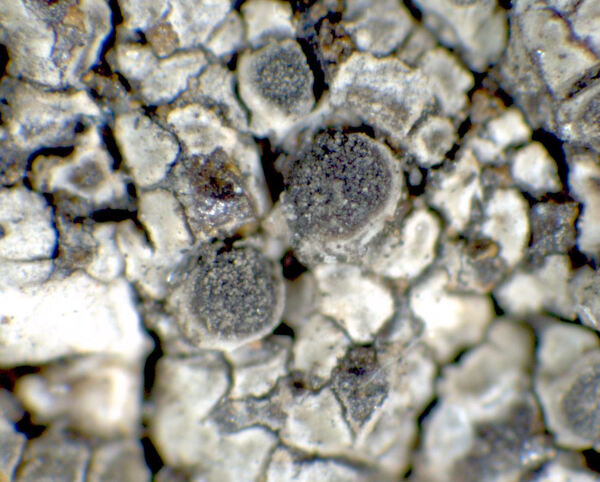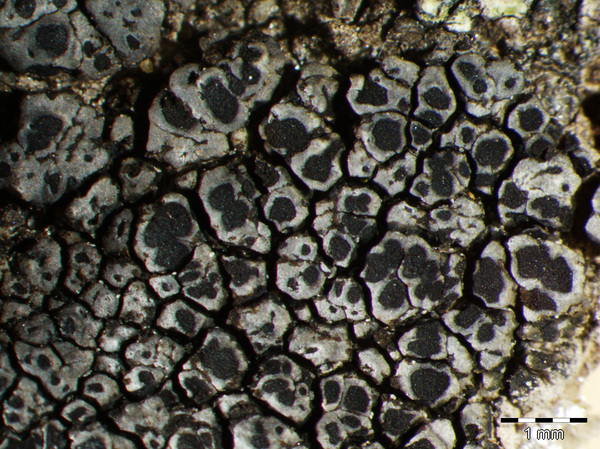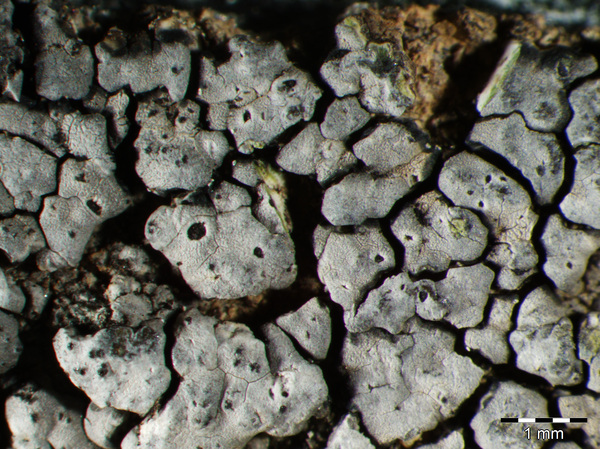Rinodina trachytica (A. Massal.) Bagl. & Carestia
Atti Soc. Critt. Ital., 2: 209, 1880. Basionym: Mischoblastia lecanorina var. trachytica A. Massal. - Ric. Auton. Lich. Crost.: 41, 1852.
Synonyms: Lecanora confragosa var. immersoareolata Harm.; Rinodina confragosa var. immersoareolata (Harm.) Zahlbr.; Rinodina iberica H. Mayrhofer; Rinodina subtrachytica J. Steiner
Distribution: N - VG, Ven (Lazzarin 2000b), TAA, Lomb, Piem (Isocrono & al. 2004), Emil (Scheidegger & al. 2001, Fariselli & al. 2020), Lig (Giordani & al. 2016). C - Tosc, Sar (Rizzi & al. 2011, Giordani & al. 2013). S - Camp (Aprile & al. 2002), Si (Grillo & al. 1996, Grillo 1998, Grillo & Caniglia 2004).
Description: Thallus crustose, episubstratic, white to pale grey, areolate, sometimes slightly white-pruinose, often delimited by a dark prothallus, the areoles discrete to usually contiguous, more or less angular, flat to slightly convex. Cortex formed by hyphae running perpendicularly to the surface, often with a blue-green pigment reacting N+ reddish; medulla white, non-amyloid. Apothecia lecanorine to cryptolecanorine, at first immersed, then subsessile, the mature ones often surrounded by crescent-shaped areoles, (0.2-)0.3-0.6(-0.8) mm across, with a dark brown to black, epruinose, flat to slightly convex disc and a thin, more or less persistent thalline margin. Proper exciple poorly developed; epithecium 10-20 μm thick, brown to blue green and then N+ red; hymenium colourless, 60-80 μm high, I+ blue; paraphyses mostly simple, 1.5-2.5 μm thick at mid-level, the apical cells 4-8 μm wide. Asci 8-spored, narrowly clavate to clavate, the K/I+ blue tholus penetrated by a faintly amyloid apical cushion with parallel or diverging flanks, the wall K/I-, surrounded by a K/I+ blue outer layer, Lecanora-type. Ascospores 1-septate, pale brown, ellipsoid (14-)16-20(-23) x (7.5-)8-10(-12) μm, Mischoblastia-type, becoming more or less Pachysporaria-type when overmature, swelling at septum in K, the torus developed, the wall warted, the ontogeny of type A (apical wall thickening after septum formation). Pycnidia black, immersed. Conidia bacilliform, 3-5 x 0.8-1.4 μm. Photobiont chlorococcoid. Spot tests: thallus K+ faintly yellow, C+ faintly yellow, P+ faintly yellow, often N+ reddish, UV+ very faintly orange. Chemistry: atranorin, 2'-0-methylsuperperlatolic acid, 2'-0-methylisohyperlatolic / 2'-0-methylhyperlatolic acids, 2'-0-methylperlatolic acid and ±confluentic and hyperconfluentic acids.Note: a Mediterranean-Macaronesian to mild-temperate lichen found on base-rich, mostly volcanic rocks, and on serpentinite, most common in Mediterranean Italy.
Growth form: Crustose
Substrata: rocks
Photobiont: green algae other than Trentepohlia
Reproductive strategy: mainly sexual
Commonnes-rarity: (info)
Alpine belt: absent
Subalpine belt: absent
Oromediterranean belt: absent
Montane belt: absent
Submediterranean belt: rare
Padanian area: absent
Humid submediterranean belt: rather common
Humid mediterranean belt: rather rare
Dry mediterranean belt: very rare
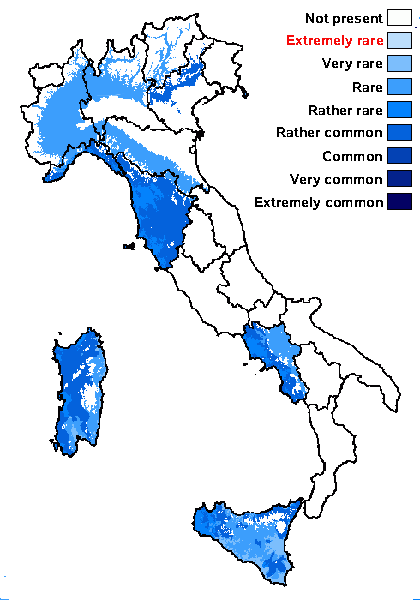
Predictive model
Herbarium samples
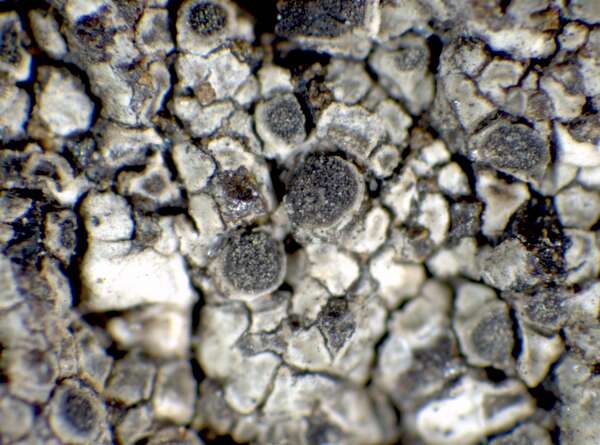

P.L. Nimis; Owner: Department of Life Sciences, University of Trieste
Herbarium: TSB (17090)
2001/11/29
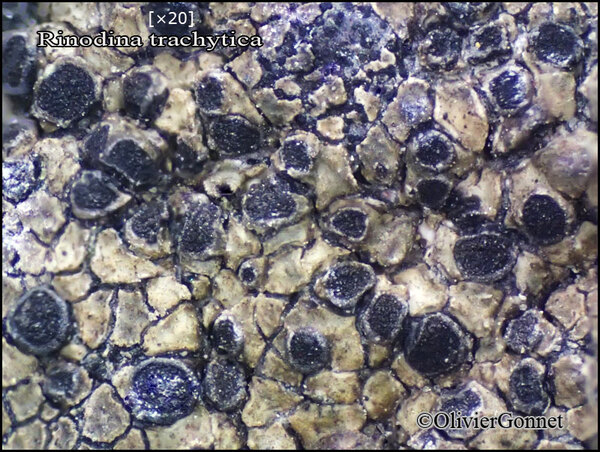
Courtesy Danièle et Olivier Gonnet - Source: https://www.afl-lichenologie.fr/Photos_AFL/Photos_AFL_R/Textes_R2/Rinodina_trachytica.htm
France, 5/10/2017 - Villeneuve-Loubet - Alpes-Maritimes - (06) - sur roche (andésite)
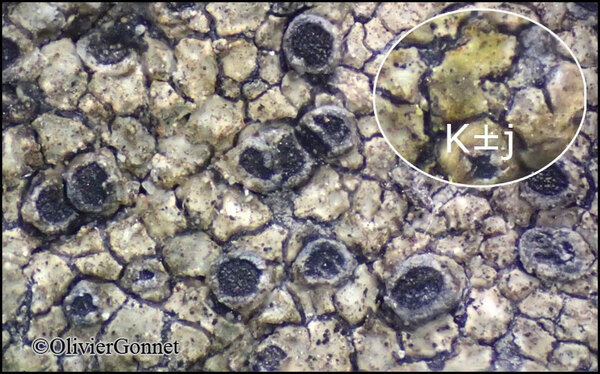
Courtesy Danièle et Olivier Gonnet - Source: https://www.afl-lichenologie.fr/Photos_AFL/Photos_AFL_R/Textes_R2/Rinodina_trachytica.htm
France, 5/10/2017 - Villeneuve-Loubet - Alpes-Maritimes - (06) - sur roche (andésite)
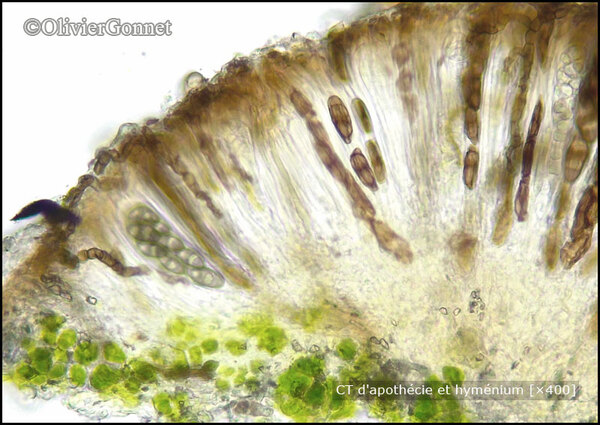
Courtesy Danièle et Olivier Gonnet - Source: https://www.afl-lichenologie.fr/Photos_AFL/Photos_AFL_R/Textes_R2/Rinodina_trachytica.htm
France, 5/10/2017 - Villeneuve-Loubet - Alpes-Maritimes - (06) - sur roche (andésite)
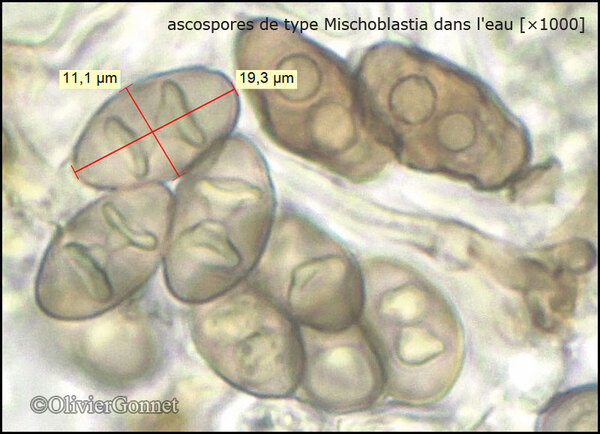
Courtesy Danièle et Olivier Gonnet - Source: https://www.afl-lichenologie.fr/Photos_AFL/Photos_AFL_R/Textes_R2/Rinodina_trachytica.htm
France, 5/10/2017 - Villeneuve-Loubet - Alpes-Maritimes - (06) - sur roche (andésite)
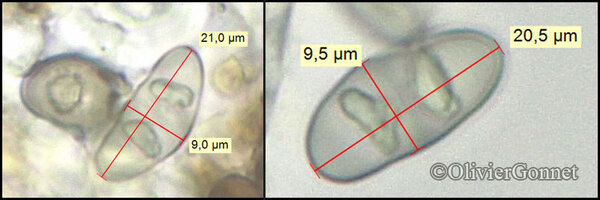
Courtesy Danièle et Olivier Gonnet - Source: https://www.afl-lichenologie.fr/Photos_AFL/Photos_AFL_R/Textes_R2/Rinodina_trachytica.htm
France, 5/10/2017 - Villeneuve-Loubet - Alpes-Maritimes - (06) - sur roche (andésite)
Growth form: Crustose
Substrata: rocks
Photobiont: green algae other than Trentepohlia
Reproductive strategy: mainly sexual
Commonnes-rarity: (info)
Alpine belt: absent
Subalpine belt: absent
Oromediterranean belt: absent
Montane belt: absent
Submediterranean belt: rare
Padanian area: absent
Humid submediterranean belt: rather common
Humid mediterranean belt: rather rare
Dry mediterranean belt: very rare

Predictive model
| Herbarium samples |


P.L. Nimis; Owner: Department of Life Sciences, University of Trieste
Herbarium: TSB (17090)
2001/11/29

Courtesy Danièle et Olivier Gonnet - Source: https://www.afl-lichenologie.fr/Photos_AFL/Photos_AFL_R/Textes_R2/Rinodina_trachytica.htm
France, 5/10/2017 - Villeneuve-Loubet - Alpes-Maritimes - (06) - sur roche (andésite)

Courtesy Danièle et Olivier Gonnet - Source: https://www.afl-lichenologie.fr/Photos_AFL/Photos_AFL_R/Textes_R2/Rinodina_trachytica.htm
France, 5/10/2017 - Villeneuve-Loubet - Alpes-Maritimes - (06) - sur roche (andésite)

Courtesy Danièle et Olivier Gonnet - Source: https://www.afl-lichenologie.fr/Photos_AFL/Photos_AFL_R/Textes_R2/Rinodina_trachytica.htm
France, 5/10/2017 - Villeneuve-Loubet - Alpes-Maritimes - (06) - sur roche (andésite)

Courtesy Danièle et Olivier Gonnet - Source: https://www.afl-lichenologie.fr/Photos_AFL/Photos_AFL_R/Textes_R2/Rinodina_trachytica.htm
France, 5/10/2017 - Villeneuve-Loubet - Alpes-Maritimes - (06) - sur roche (andésite)

 INDEX FUNGORUM
INDEX FUNGORUM
 GBIF
GBIF
 DOLICHENS
DOLICHENS
